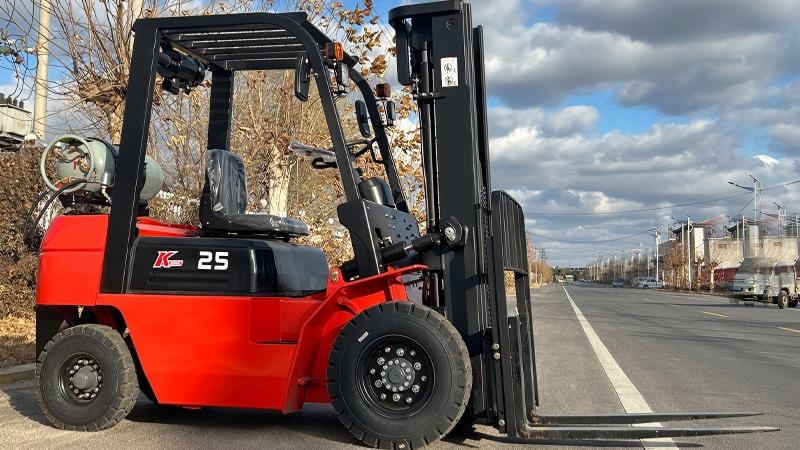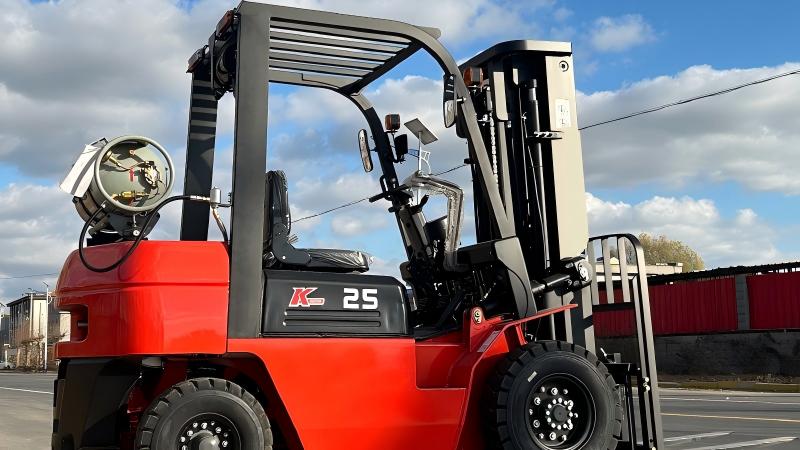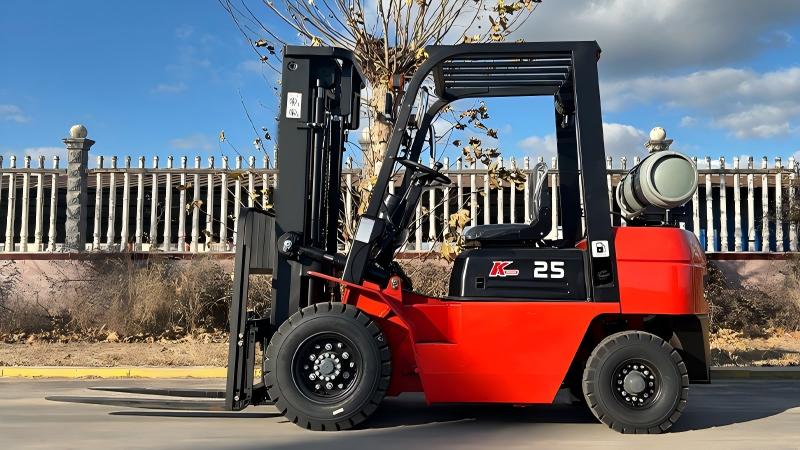Understanding the fuel consumption rate of a liquefied petroleum gas (LPG) forklift is a critical component of operational budgeting and logistical planning for any warehouse or distribution center. Unlike a simple miles-per-gallon figure for a car, the fuel efficiency of an LPG forklift is a dynamic metric, typically expressed in kilograms of fuel consumed per hour of operation. The industry often cites a broad average range of 2.0 to 3.0 kilograms of LPG per hour for a standard 2.5 to 3-ton capacity forklift under typical working conditions. However, fixating on this average alone can be misleading, as it is a composite figure derived from vastly different operational environments. The actual consumption is a symphony of interwoven variables, each playing a significant role in the final fuel tally. These variables include the forklift's engine power and its inherent thermodynamic efficiency, the average weight of the loads being transported, and the intensity of the work schedule—whether it involves continuous, heavy-duty lifting or more sporadic, light-duty tasks. This foundational understanding is paramount because even a slight deviation in consumption, when multiplied across an entire fleet and over thousands of operational hours, can translate into a substantial difference in annual fuel expenditure, directly impacting the company's bottom line. Therefore, viewing fuel efficiency not as a static number but as a manageable performance indicator is the first step toward achieving cost-effective and sustainable material handling operations.
The primary determinants of LPG consumption are deeply rooted in the daily operational realities of the forklift. Arguably, the most influential factor is the duty cycle—the proportion of time the forklift is actively working versus idling. A forklift engaged in nearly continuous lifting and transporting of heavy loads, such as in a high-throughput shipping dock, will naturally consume fuel at the upper end of the spectrum, potentially even exceeding 3.0 kg/hour. Conversely, a machine used for lighter, intermittent tasks in a retail stockroom may consistently perform below the 2.0 kg/hour mark. Furthermore, operator behavior is a massive, often overlooked, variable. Aggressive driving with rapid acceleration and harsh braking, along with prolonged periods of unnecessary idling, can inflate fuel consumption by twenty percent or more. The physical work environment also imposes its own demands; navigating steep inclines, traveling over uneven or soft surfaces like gravel, and operating in cold storage facilities where engine efficiency drops all contribute to higher LPG usage. Even the forklift’s attachment can play a role; using a sideshifter or a paper-roll clamp adds significant weight and can alter the vehicle's aerodynamic profile and balance, forcing the engine to work harder. In essence, the forklift's fuel gauge is a direct reflection of the complexity and intensity of the tasks it is asked to perform.
To move beyond rough estimates and gain precise control over costs, businesses must learn to calculate and benchmark their specific LPG consumption. The most accurate method involves tracking fuel usage over a known period of operational hours. For instance, by refilling a forklift's LPG tank and noting that it took 15 kilograms of propane to run for an 8-hour shift, one can calculate a consumption rate of 1.875 kg/hour (15 kg / 8 hours). Repeating this process across different shifts, operators, and applications provides a reliable, company-specific dataset. This empirical data is far more valuable than industry averages for forecasting budgets and identifying outliers. With this information, managers can investigate why one particular forklift, or one operator, consistently shows higher consumption rates. This data-driven approach facilitates targeted interventions, such as implementing operator training programs focused on fuel-efficient driving techniques or optimizing warehouse layout to minimize travel distances. Moreover, this calculated consumption rate allows for a direct operational cost comparison with other power sources, such as evaluating the cost per hour of an LPG forklift against the electricity cost per hour for a comparable electric model, providing a clear financial picture for strategic fleet planning and modernization.
Finally, placing LPG forklift fuel efficiency within the broader context of alternative power sources reveals its strategic advantages and limitations. When compared to a diesel forklift, LPG engines generally offer a cleaner burn with significantly lower emissions of particulate matter and nitrogen oxides, making them suitable for indoor use. From an efficiency standpoint, a diesel engine might be more fuel-efficient in terms of energy density, but the higher cost of diesel fuel and maintenance can alter the total cost of ownership equation. The most common comparison is between LPG and electric forklifts. While a lead-acid battery electric forklift has a very low "fuel" cost per hour and produces zero localized emissions, its limitations include long recharge times, battery degradation over time, and the high upfront cost of batteries and charging infrastructure. The LPG forklift’s key advantage is its operational flexibility; it can work multiple long shifts with only a quick cylinder change, a feature invaluable in 24/7 operations. Therefore, the decision is not solely about which option is the most fuel-efficient in a vacuum, but which system offers the most efficient and cost-effective solution for a specific application, balancing factors like initial investment, operational intensity, fuel costs, and emission requirements to determine the optimal choice for the business.
Post time:Nov.21.2025



